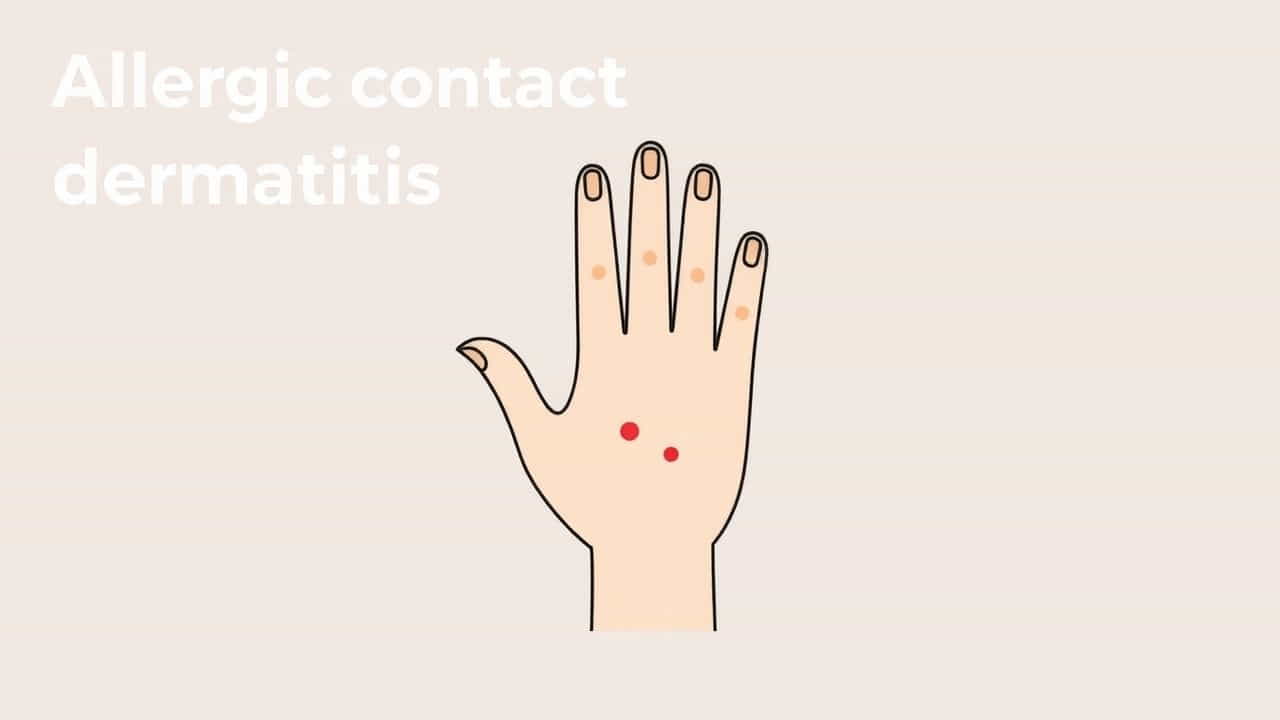What Is Allergic Contact Dermatitis: Causes, Symptoms, and TreatmentAllergic contact dermatitis is a common skin condition that occurs when the skin comes into contact with a substance that triggers an allergic reaction. This condition can cause discomfort, redness, and irritation, impacting the quality of life for those affected. In this topic, we’ll explore what allergic contact dermatitis is, its causes, symptoms, and available treatments.
What Is Allergic Contact Dermatitis?
Allergic contact dermatitis is a type of skin inflammation that happens when the immune system reacts to an allergen a substance that the body perceives as harmful. This reaction results in symptoms like itching, redness, swelling, and sometimes blistering.
The condition differs from irritant contact dermatitis, which is caused by direct damage to the skin from harsh substances rather than an allergic response.
Common Causes of Allergic Contact Dermatitis
1. Metals
Nickel is one of the most common causes of allergic contact dermatitis. It is found in jewelry, watches, and belt buckles. People allergic to nickel may develop symptoms after prolonged skin contact with items containing this metal.
2. Fragrances and Perfumes
Fragrances in personal care products like soaps, lotions, and perfumes can trigger allergic reactions in sensitive individuals.
3. Plants
Certain plants, like poison ivy, poison oak, and poison sumac, contain urushiol, an oil that can cause an allergic reaction upon contact.
4. Cosmetics and Skincare Products
Ingredients such as preservatives, dyes, and even natural extracts in cosmetics can cause allergic contact dermatitis.
5. Latex
Latex, found in gloves, balloons, and medical equipment, is another common allergen that can cause skin irritation in sensitive individuals.
6. Medications
Topical medications, including antibiotic ointments or creams, can sometimes lead to allergic contact dermatitis.
Symptoms of Allergic Contact Dermatitis
The symptoms of allergic contact dermatitis may vary depending on the severity of the reaction and the area of skin exposed to the allergen. Common symptoms include:
-
Itching: A persistent urge to scratch the affected area.
-
Redness: Inflamed and reddened skin around the contact area.
-
Swelling: Mild to severe swelling in the affected region.
-
Rash: Small, raised, or flat bumps may develop.
-
Blisters: In some cases, fluid-filled blisters may appear.
-
Dry or Cracked Skin: Chronic allergic contact dermatitis may lead to dry, flaky skin.
How Is Allergic Contact Dermatitis Diagnosed?
If you suspect you have allergic contact dermatitis, a dermatologist can help identify the allergen responsible. Here are common diagnostic methods:
1. Patch Testing
Patch testing involves applying small amounts of potential allergens to the skin, typically on the back. After 48 hours, the dermatologist checks for any reactions. This test helps pinpoint the specific substance causing the allergy.
2. Medical History
Your doctor may ask about your symptoms, skincare products, and any recent exposure to potential allergens.
Treatment for Allergic Contact Dermatitis
1. Avoiding the Allergen
The most effective way to manage allergic contact dermatitis is to avoid the substance causing the reaction. Identifying and eliminating the allergen from your daily life can significantly reduce flare-ups.
2. Topical Corticosteroids
For mild to moderate cases, doctors often prescribe corticosteroid creams or ointments to reduce inflammation and itching.
3. Oral Antihistamines
Antihistamines can help alleviate itching and other allergic symptoms, especially in severe cases.
4. Moisturizers
Using fragrance-free and hypoallergenic moisturizers can soothe dry, irritated skin and support the skin’s healing process.
5. Cool Compresses
Applying a cool, damp cloth to the affected area can provide temporary relief from itching and swelling.
Prevention Tips for Allergic Contact Dermatitis
Preventing allergic contact dermatitis involves reducing exposure to known allergens. Here are some practical tips:
1. Choose Hypoallergenic Products
Opt for skincare products, makeup, and cleaning agents labeled fragrance-freeâ or hypoallergenic.â
2. Wear Protective Clothing
Gloves and long sleeves can help minimize skin exposure to allergens, especially when gardening or handling harsh chemicals.
3. Avoid Known Allergens
Once you identify the allergen causing your symptoms, avoid direct contact with it. For instance, if you are allergic to nickel, choose jewelry made from other materials like stainless steel or gold.
4. Read Labels Carefully
Check the ingredient lists of personal care products and household items to ensure they don’t contain substances that trigger your allergy.
When to See a Doctor
You should consult a dermatologist if:
-
The symptoms persist for more than a week.
-
The rash spreads to a large area of the body.
-
Blisters become infected or ooze pus.
-
Over-the-counter treatments fail to provide relief.
A healthcare professional can provide tailored advice and treatment options to help manage your condition effectively.
The Impact of Allergic Contact Dermatitis
Allergic contact dermatitis can affect your daily life, especially if the symptoms are severe or chronic. Frequent exposure to allergens in the workplace, home, or environment can lead to ongoing discomfort. Managing the condition requires vigilance, self-care, and sometimes medical intervention.
Allergic contact dermatitis is a common but manageable skin condition caused by allergens in everyday items. Understanding the causes, recognizing the symptoms, and taking preventative measures can help reduce the risk of flare-ups. If you experience persistent or severe symptoms, seek professional medical advice to identify the allergen and explore effective treatment options.
By staying informed and proactive, you can minimize the impact of allergic contact dermatitis and maintain healthy, comfortable skin.
